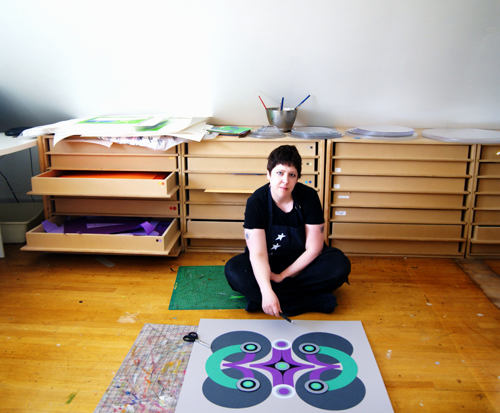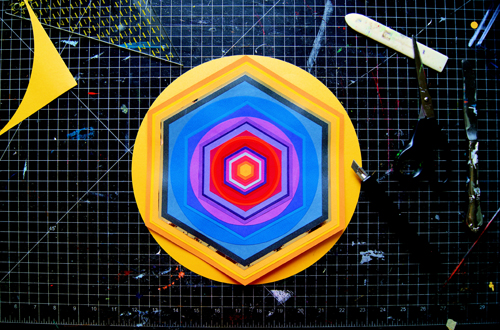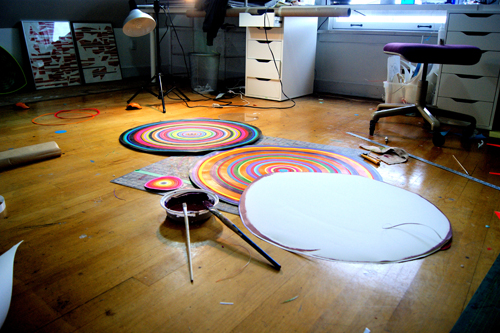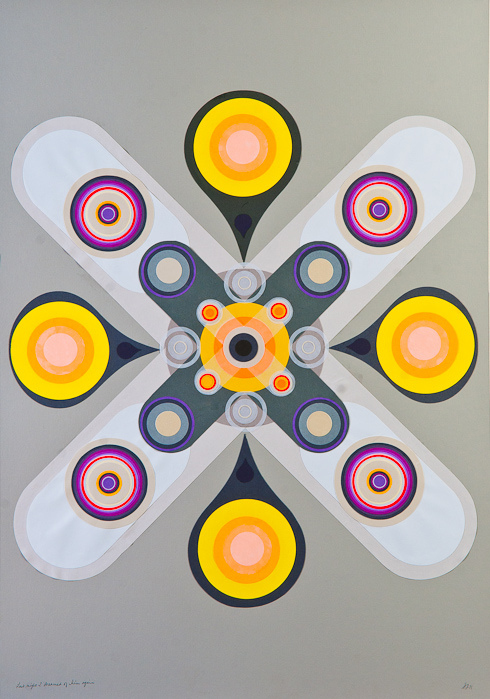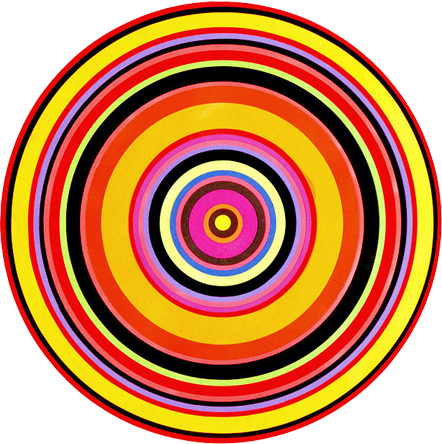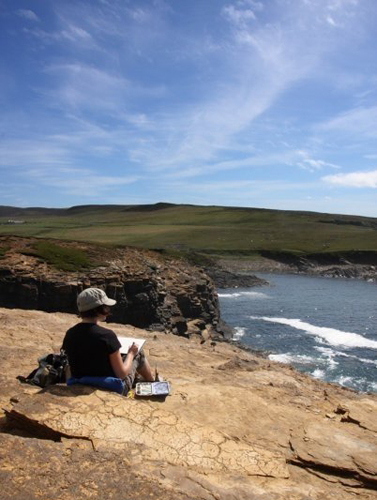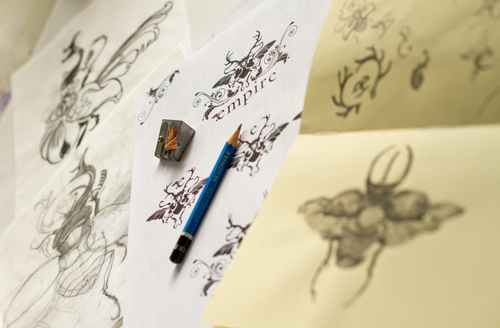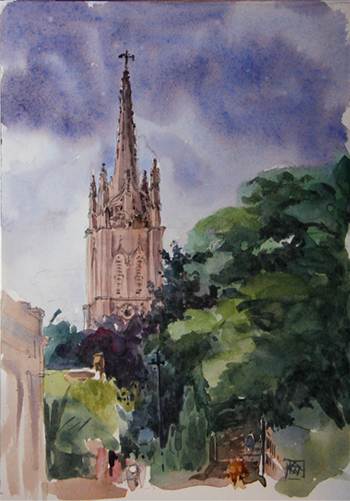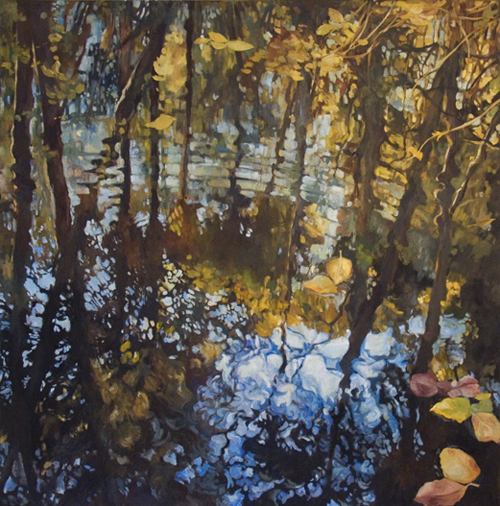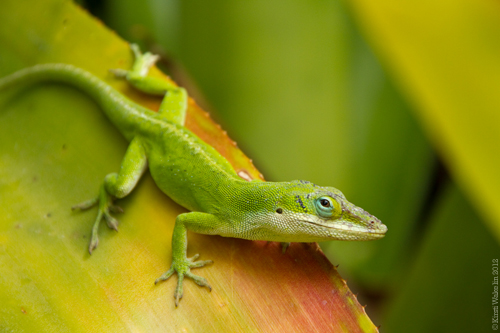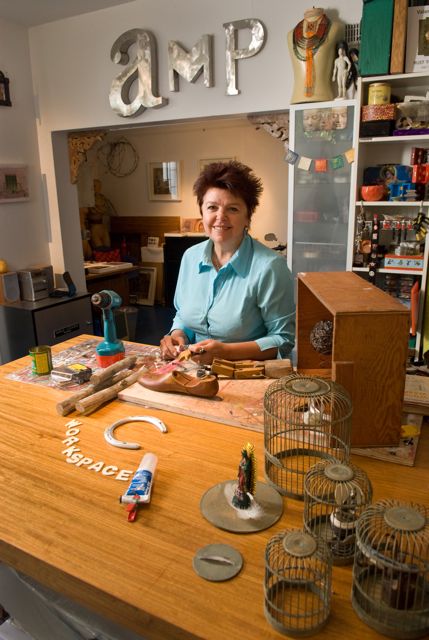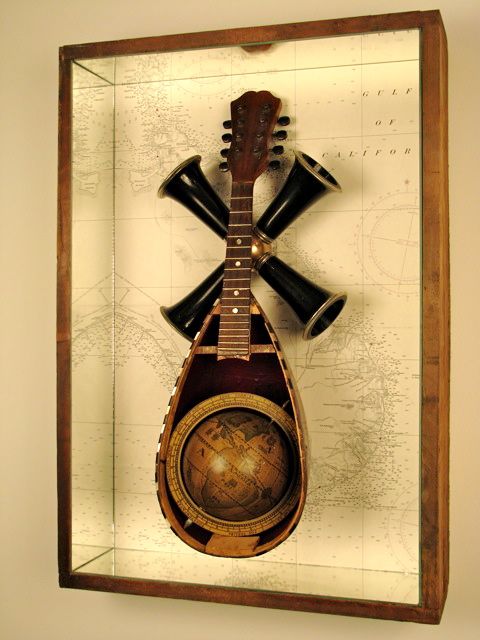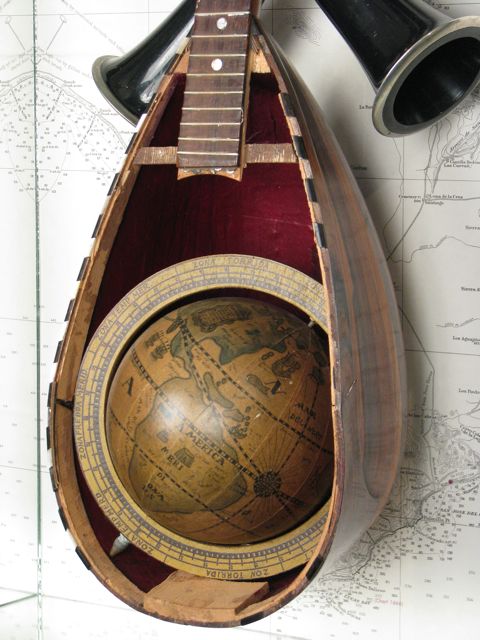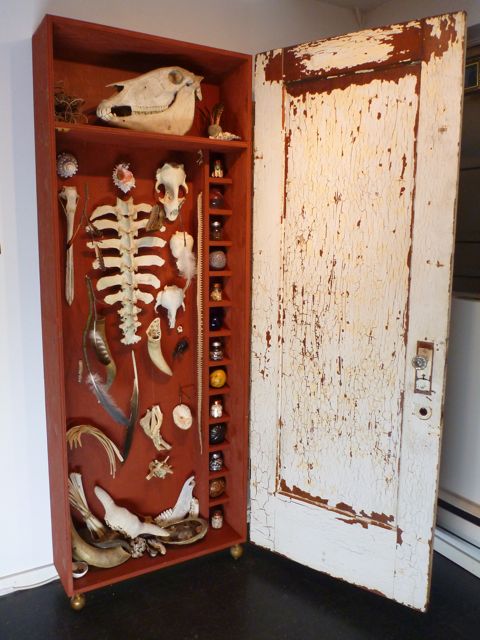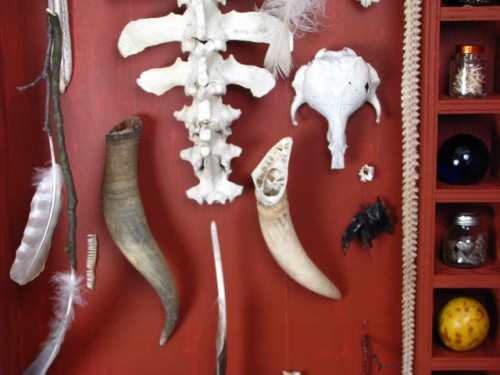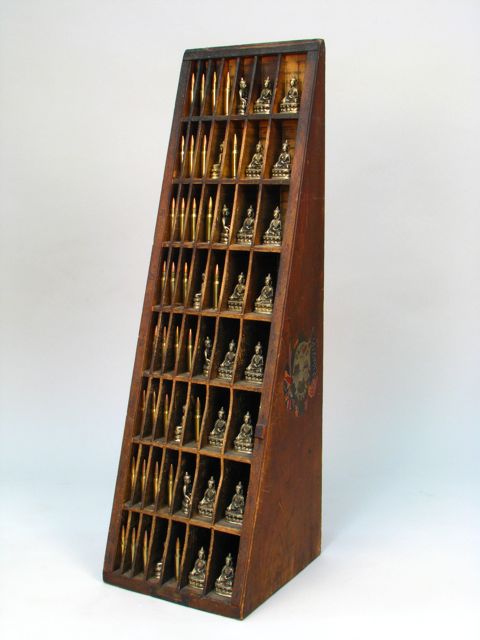I had the pleasure of viewing the work of Sarah Gee in person for the first time at the Monument(al) group Show last year – a beautifully curated exhibition also featuring work by Jessica Bell and Aaron Moran. Sarah’s work is bold, colourful, and plays with intricate shape and form to create her compositions. I was smitten with her work, and I think you will be too.
Tell us about yourself:
I’m a bit of a loner, and like to go my own way. I’m largely self-taught, which means I’d rather explore on my own and make mistakes than be taught the right way to do anything. I’ve had a lot of physical hardship in my life, and it’s made me quite self-contained and self-sufficient – I think I would do quite well in a post apocalyptic world. I’d be the one making a water filtration system out of scavenged pantyhose and sewing machine parts.
How long have you been an artist and how did you become one?
I’ve been doing this hard-edged geometrical collage work for about three years. Before that, I did a lot of waiting around for something good to happen, trying to keep my head above water. I’ve been a bookseller, I’ve done manual paste-up for a newspaper, designed textiles, worked in a chocolate factory. For a long time I made photo-realist figurative textile pieces that were quite popular with people but for me were just a placeholder until the right thing came along. And now it has.
Do you work full time or part time as an artist? If part-time, what do you do to support yourself?
I am able to work full time as an artist only because I have a wonderful and supportive husband with a steady paycheque. Otherwise I couldn’t do it at all. Vancouver is a tough city to be in the arts. Government funding is at an all-time low, and galleries, theatres and artist-run centers are closing down. Mostly, when people aren’t slaving away at their desks trying to make a down payment on a condo, they’re snowboarding at Whistler. Yes, there are curators and amazing galleries and people who love the arts, but it feels very subculture to me, very marginal. I hope that will change in a few years.
What are some of your favourite materials to work with?
I work almost exclusively with archival, cotton-based paper. I love Clairefontaine Maya paper, a richly colour-saturated heavy cardstock with absolutely no texture to it. Because my collages often have large glued elements, I need a heavy weight, maybe 140 to 300lb., in order not to have warping. I’m also madly in love with my Plexiglas templates, which I had fabricated for me. They’re so simple and so beautiful.
Tell us a bit about the process you go through to create your work:
My work is precise and detailed, which means I do a lot of preparation, taking careful measurements, dry fitting, making sure things will come out the way I intend them to. It’s a lot like composing music, the individual notes mean little until they combine into a melody. Mostly I don’t know until the end if I’ve made something good, or a complete disaster. One of the things I’ve struggled with is learning to waste paper through experimentation or at least fearless creating. I’ve been in extreme poverty a couple of times in my life and I can feel the echo of it every time I make a tiny mistake that ruins a piece of matte board I just spent eight dollars on.
Where do you find inspiration for your work, and what keeps you motivated?
I’m not really a worldly person or a particularly referential artist. For example, I don’t look at a sunset or snowy mountain and feel it has a place in my inspiration file. I don’t travel or take reference photographs. I don’t even sketch all that often. Instead I’m seeking to create balance and harmony through geometrical arrangements, arrive at some kind of inner resolution. So I guess both the inspiration and motivation comes from self-determination. That sounds really, really boring, I know.
Tell us about other artists who have inspired you:
I’m inspired by the hard-edged painters who came to prominence in the sixties and seventies, Frank Stella, Tadasky, Josef Albers, Frank Hammersley, Miguel Angel Vidal, as well as our own Vancouver artists like Michael Morris and Gary Lee-Nova. I also like anything obsessive, when you get the sense, when looking at a piece of art, that the person who made it was inventing deeply private formulas, ways of seeing, in order to make sense of the world. When I see “Outsider” artists working in complete isolation, like the astonishing Archilles Rizzoli, Henry Darger or James Hampton, making beautiful things despite a life of deprivation and no schooling, I’m so moved by that.
Where can people find you both online and offline:
People can find my website at sarahgeeart.com I have a gallery and a blog called Studio Life there.
They can also follow me on Twitter @SarahGeeArt
